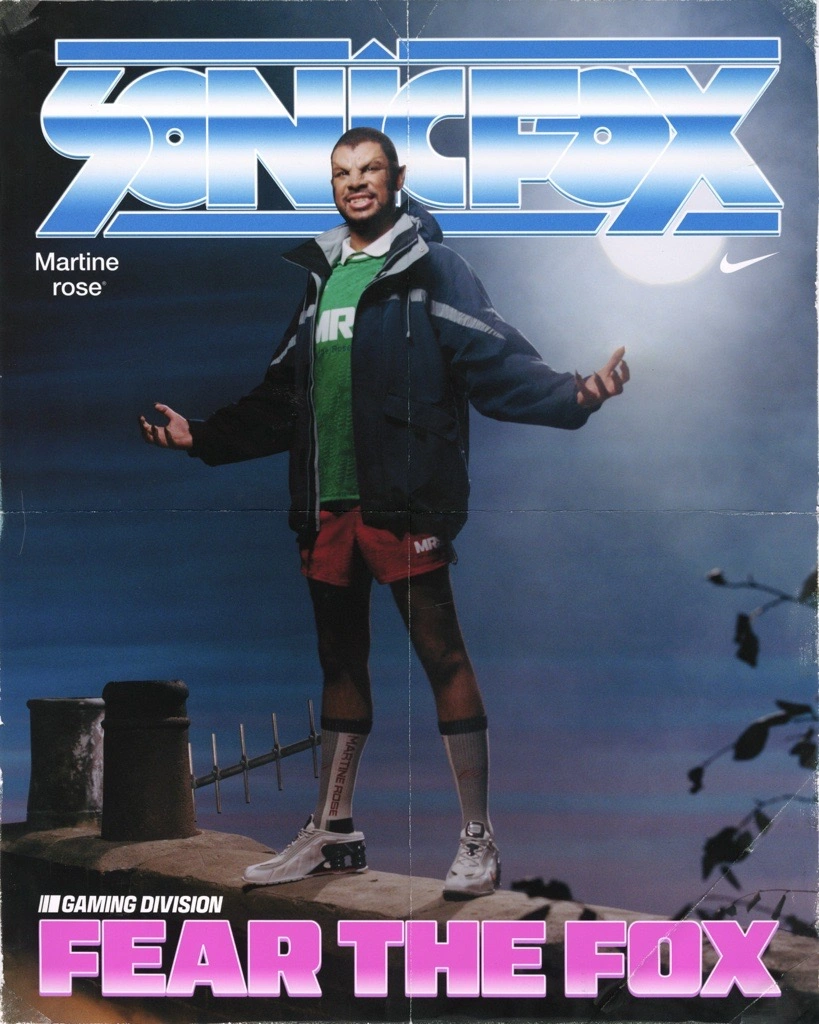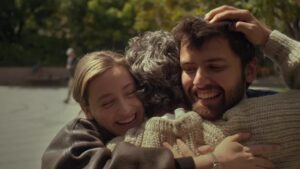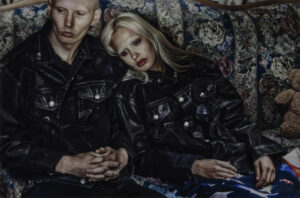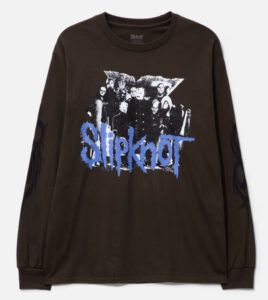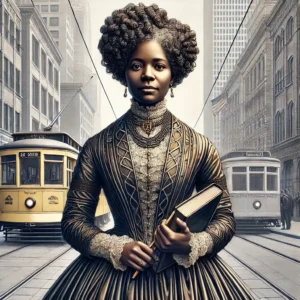the rise of the visual auteur
London’s Magazine venue became the heartbeat of the global music-video scene last night, as the 2025 UK Music Video Awards crowned its champions. But the biggest story wasn’t about the pop superstar everyone thought the night might revolve around — it was about the visual revolution behind A$AP Rocky’s “Tailor Swif.”
The Vania and Muggia-directed film swept the board, collecting Video of the Year, Best Production Design, Best Cinematography, Best Visual Effects, and Best Hip Hop/Grime/Rap Video – International. It was a clean sweep that confirmed what those who follow visual culture already sensed: the music video has returned to art-film status, and Rocky has become one of its boldest curators.
“Tailor Swif” is not a typical rap video. It’s an acid-trip kaleidoscope, merging surreal design, dream logic, and fashion-film precision. The cinematography glides through painterly compositions; each frame feels like a collage of motion and sculpture. By the time the camera pulls back in its final sequence, the viewer is left less with a song than with an experience — a hallucinatory performance piece that uses hip hop’s language to speak about celebrity, identity, and spectacle itself.
The multiple technical awards prove that the industry still values construction and craft. In a year saturated with handheld vertical clips and algorithm-chasing edits, “Tailor Swif” reasserted the dominance of set design, lighting, and real cinematography. It was not filmed to trend; it was filmed to endure.
View this post on Instagram
fka twigs and the choreography of emotion
If Rocky’s win signaled visual grandeur, FKA twigs’ victories embodied emotional choreography. Her Jordan Hemingway-directed “Eusexua” conquered the categories of Best Pop Video – UK, Best Choreography (Zoi Tatapoulos), Best Editing (Charlie Von Rotberg), and Best Production Company (Object & Animal). She also took home Best Alternative Video – UK for “Striptease.”
Twigs’ relationship to the music-video medium has always been transformative. She treats her own body as an instrument, one that translates rhythm into ritual. “Eusexua” expands that vision: a feverish, neon-tinged dream where movement and camera motion become one. Each cut feels like a pulse; each gesture feels sculpted.
Her collaborator Zoi Tatapoulos choreographed movement not as background decoration but as storytelling — bodies as syntax, limbs as metaphors. Meanwhile, editor Charlie Von Rotberg’s precision gave the piece a nervous heartbeat, oscillating between ecstasy and introspection.
It’s rare for an artist to dominate both pop and alternative categories, but twigs has made duality her art form. She occupies the space between elegance and experiment, the mainstream and the avant-garde, blurring lines so deftly that the industry must follow.
The twin triumphs of “Eusexua” and “Striptease” mark her as more than a performer; she’s a filmmaker in spirit. Each project expands the visual grammar of what a music video can express about intimacy, desire, and transformation.
View this post on Instagram
london
This year’s UKMVAs also confirmed London’s status as the creative capital of music video direction. Photographer-turned-filmmaker Gabriel Moses won Best Director for his body of work with Clipse, Kendrick Lamar, and Travis Scott. His cinematic eye bridges still photography’s discipline with motion’s spontaneity. His images carry that sacred-modern duality — high-gloss but heavy with mood, refined but deeply human.
Meanwhile, Luna Carmoon claimed Best New Director for the ethereal “It’s Amazing to Be Young,” a film made for Fontaines D.C. Carmoon’s piece blended coming-of-age nostalgia with surreal dreamscapes, showing an emerging talent unafraid of emotional surrealism.
Together, Moses and Carmoon define two sides of London’s visual personality: one precise and regal, the other untamed and imaginative. Both represent a generation raised on digital experimentation yet fluent in analog emotion.
Their victories echo a broader truth — that British directors are steering the global conversation on what music video storytelling can be. They move effortlessly between art film, fashion editorial, and commercial commissions. Each project exists not as content, but as craft.
style
The award for Best Styling in a Video was presented in partnership with Dazed, whose content strategy director Danil Boparai took the stage to announce the winner: Yung Lean’s “Forever Yung.” The trophy went to stylist Desiree Laidler, director Aidan Zamiri, and once again, production powerhouse Object & Animal.
The visual styling of “Forever Yung” illustrates a larger movement in music video art: fashion is no longer merely wardrobe — it’s narrative. Laidler’s direction infused the video with a spectral, youthful melancholy, where clothing becomes memory and identity.
Under Zamiri’s lens, Yung Lean appears not as a rapper but as an apparition drifting through stylized tableaus — an aesthetic lineage stretching from Raf Simons’ post-punk melancholy to Margiela’s deconstructionism. The collaboration’s success hints at how fashion stylists are increasingly positioned as co-authors of visual culture.
This cross-pollination — between style journalism and music-video design — has turned the UKMVAs into a mirror of how art direction and wardrobe drive storytelling. It’s not about dressing stars; it’s about dressing emotion.
design
One of the most telling through-lines of the 2025 awards was the dominance of production design. The category used to sit quietly beside headline prizes, but this year it became central. The winning videos all shared a world-building instinct.
For “Tailor Swif,” production design wasn’t set dressing — it was a narrative device. The environments folded in on themselves, each room symbolizing a facet of the self. The viewer moves through dream corridors, shifting colors and textures like chapters in a fever dream.
The same spirit infused twigs’ “Eusexua.” Object & Animal’s design strategy created a liminal space — somewhere between nightclub and temple — where each surface glowed with metaphor. The choreography played against architecture; light bled into motion; the set became an organism.
Across categories, the takeaway is clear: audiences crave worlds, not walls. As brands, artists, and directors explore immersive storytelling, production design has become the emotional architecture of experience.
flow
Equally significant was the recognition of cinematography. In an era of AI-generated imagery and phone-first formats, the camera’s physicality remains irreplaceable.
The cinematographers behind this year’s winners employed techniques once reserved for cinema: fluid dolly motion, painterly lighting, 35mm and 16mm intercuts, deep-focus composition. They embraced imperfection — lens flares, texture, grain — to create authenticity.
“Tailor Swif,” in particular, was shot like a fever dream: wide-angle distortions giving way to static portraits, color palettes oscillating from bruise-violet to burnished gold. It captured not just performance but perception, blurring where the lens ends and the hallucination begins.
Such cinematography signals a return to craft amid digital convenience. It reminds artists and directors that cameras are instruments of mood, not just documentation.
illusion
The Best Visual Effects award reflected how post-production now shapes emotional storytelling. In “Tailor Swif,” visual effects aren’t spectacle — they’re psychological. The distortions, liquid transitions, and impossible architecture evoke how memory feels when fame becomes surreal.
Modern VFX work in music videos isn’t about showing what can’t exist, but about translating what can’t be described. When used poetically, effects become metaphors — dissolving faces, morphing bodies, multiplying reflections — that express the fragmentation of identity in digital life.
This year’s awards confirmed that post-production has matured from decorative trickery into genuine narrative language. The best directors now treat compositing as emotion rather than illusion.
show
If any single name ran like a thread through the evening, it was Object & Animal, the production company behind both twigs’ and Yung Lean’s winning videos. Their consistency reflects a new model of creative production — one that blurs agency, atelier, and artist collective.
Object & Animal’s portfolio demonstrates an understanding of aesthetics not as surface but as system. Their projects breathe. They collaborate with directors who treat the frame as a canvas and brands that understand subculture as currency.
Their presence across multiple wins reveals how production houses themselves have become brands of creativity. Just as fashion labels cultivate seasonal identity, production companies now curate visual language. Their involvement signals trust, taste, and a guarantee of beauty.
impression
The 2025 UKMVAs reinforced what many insiders already knew: London remains the world’s testing ground for visual experimentation. Its intersection of art schools, ad agencies, fashion studios, and underground music scenes generates an aesthetic chemistry that other capitals rarely replicate.
From Gabriel Moses’ painterly portraits to Luna Carmoon’s dream realism, the British capital has fostered a generation of polymaths — directors who shoot, design, edit, and sometimes even score their own work. They treat music videos as open-ended art forms, capable of political statement and visual poetry alike.
In contrast to the algorithmic predictability of much American pop video output, the British scene still feels artisanal. It embraces risk, imperfection, and surprise. The UKMVAs serve less as industry pageant and more as an annual census of creative courage.
No comments yet.



